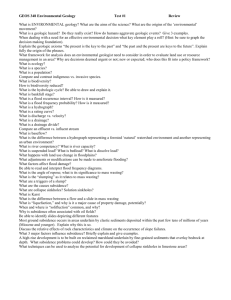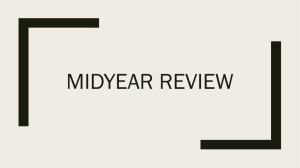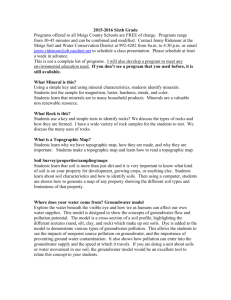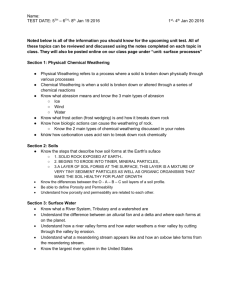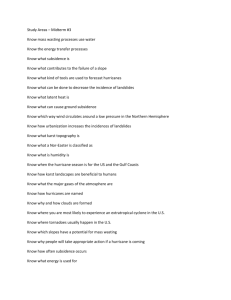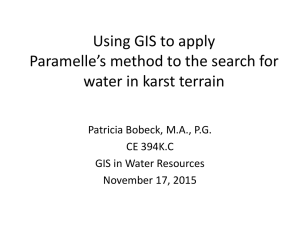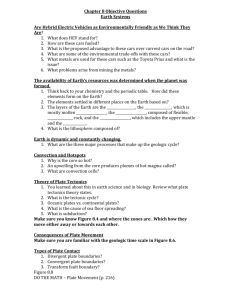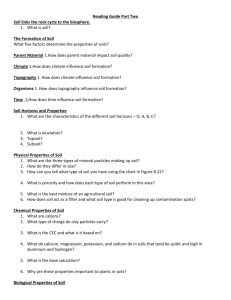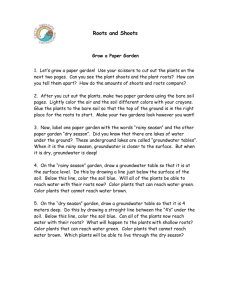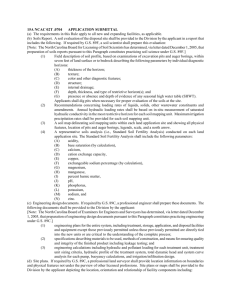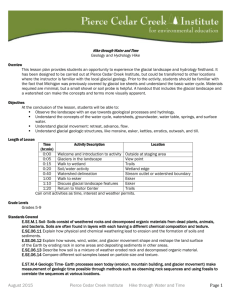Review Sheet Final Exam Spring 2009
advertisement
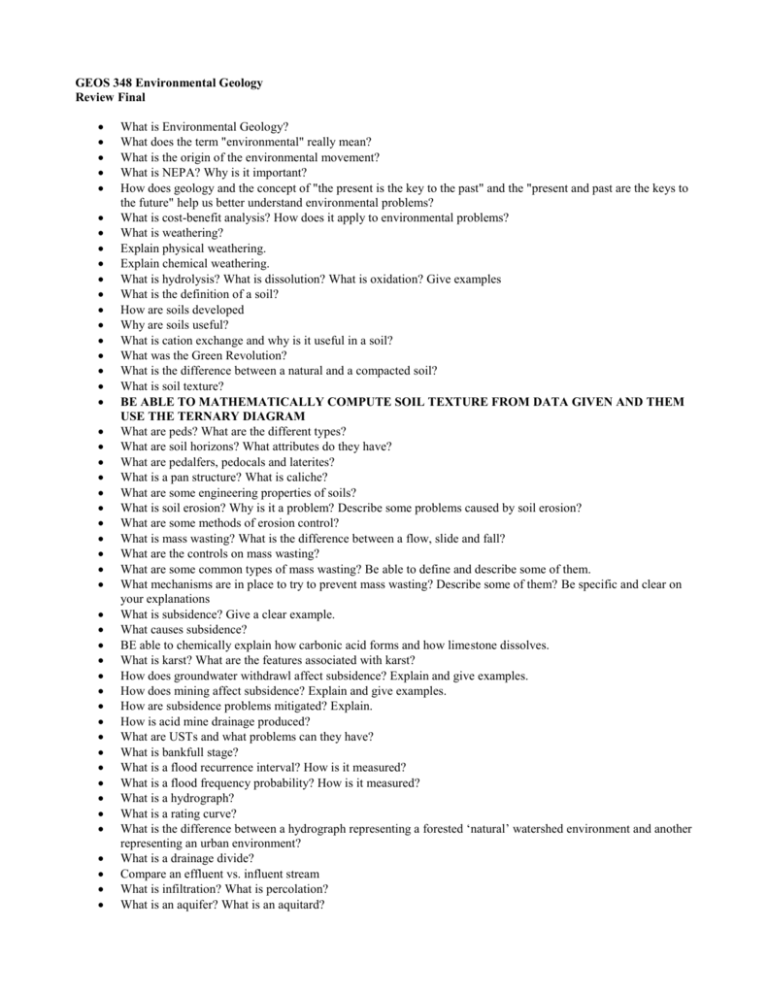
GEOS 348 Environmental Geology Review Final What is Environmental Geology? What does the term "environmental" really mean? What is the origin of the environmental movement? What is NEPA? Why is it important? How does geology and the concept of "the present is the key to the past" and the "present and past are the keys to the future" help us better understand environmental problems? What is cost-benefit analysis? How does it apply to environmental problems? What is weathering? Explain physical weathering. Explain chemical weathering. What is hydrolysis? What is dissolution? What is oxidation? Give examples What is the definition of a soil? How are soils developed Why are soils useful? What is cation exchange and why is it useful in a soil? What was the Green Revolution? What is the difference between a natural and a compacted soil? What is soil texture? BE ABLE TO MATHEMATICALLY COMPUTE SOIL TEXTURE FROM DATA GIVEN AND THEM USE THE TERNARY DIAGRAM What are peds? What are the different types? What are soil horizons? What attributes do they have? What are pedalfers, pedocals and laterites? What is a pan structure? What is caliche? What are some engineering properties of soils? What is soil erosion? Why is it a problem? Describe some problems caused by soil erosion? What are some methods of erosion control? What is mass wasting? What is the difference between a flow, slide and fall? What are the controls on mass wasting? What are some common types of mass wasting? Be able to define and describe some of them. What mechanisms are in place to try to prevent mass wasting? Describe some of them? Be specific and clear on your explanations What is subsidence? Give a clear example. What causes subsidence? BE able to chemically explain how carbonic acid forms and how limestone dissolves. What is karst? What are the features associated with karst? How does groundwater withdrawl affect subsidence? Explain and give examples. How does mining affect subsidence? Explain and give examples. How are subsidence problems mitigated? Explain. How is acid mine drainage produced? What are USTs and what problems can they have? What is bankfull stage? What is a flood recurrence interval? How is it measured? What is a flood frequency probability? How is it measured? What is a hydrograph? What is a rating curve? What is the difference between a hydrograph representing a forested ‘natural’ watershed environment and another representing an urban environment? What is a drainage divide? Compare an effluent vs. influent stream What is infiltration? What is percolation? What is an aquifer? What is an aquitard? What is a potentiometric surface? What is baseflow? What is porosity? What is permeability? How are they related. Give examples to illustrate these parameters. Who was Henri Darcy? What experiment did he conduct? Explain Darcy’s Law. Be able to do a groundwater problem What is the vadose, the phreatic zone? What is the Hydraulic Gradient of an aquifer What are some methods of groundwater remediation? What are the 2 major water laws in this country? Surface and groundwater What are some major water protection laws (NEPA, CWA, CERCLA, RCRA, SDWA) Be able to diagram the hydrologic cycle FULLY What are some metallic products mined? Non-metallics? What is in store for the future of mining? What conditions are necessary for oil formation? For coal formation? What is acid mine drainage? How is it produced? What is ‘yellow boy’? What are methane hydrates? What are some of the problems associated with fossil fuel combustion? How can we mitigate problems with fossil fuel combustion? What are the pros and cons of nuclear power? How ‘safe’ is nuclear power? What main problems are associated with it? What are some renewable sources of energy and how efficient and widespread are they? What are Reserves, Resources What are Source rock, Reservoir rocks, Cap rocks, and Stratigraphic/ Structural trap What are Spoil piles, Strip mining, Mining Law of 1872, Mountain top removal Be able to explain climate change; the greenhouse effect, greenhouse gases and the consequences of global warming. The test will consist of some multiple choice and fill in the blanks; definitions, identification of slides (i.e. photographs of things), short answers, problems (math will be involved so BRING a calculator) and probably a case study analysis.

